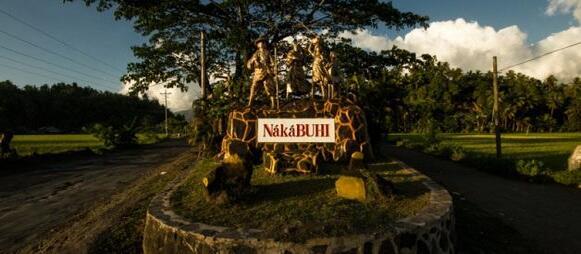
From the past writings of Friars and native historians, we learned that somewhere between what is now Sta. Crus and the sitio of Sapa was a little lake called Buyok-buyokan, so called because of the faint circular motion of the water. Along the shores of this lake were small huts of the Agta who lived fishing and hunting.
On April 14, 1578, Captain Pedro Chavez and a certain Fr. Tomas Francisco, Franciscan and some members of the exploring party discovered and founded Buhi. It’s inhabitants at the time were estimated to be 5, 645 pagans scattered in the different settlements. In 1605 thought the painstaking effort s of Franciscan, Fr. Antonio Mendez, they received their Catholic baptism in the jungles and dense forests where they lived.
On January 4, 1641, at 1:00 o’clock in the afternoon, all the well known volcanoes in the Bicol region erupted simultaneously. The side of a high mountain, the Bicol valley blew up and subsequent earhquakes that followed made the eastern sank down and the fine lake came into existence.
Apparently, the small lake Buyok-buyokan joined the waters of the new lake because this small lake disappeared. What only remained were the two sitios of Buyok-buyokan and Sapa. The few of the native s who survived scampered to the north-eastern Island. Thus, another hamlet was developed.
On February 1, 1814, Mayon Volcano had it’s worst eruption. The thriving community of Cagsawa at the foot of the volcano was buried under the lava and ashes. Only the upper portion of the frontage of the church and its belfry remained to be seen. And it still can be seen to this day. Many of the people living near the side of the volcano fled for their lives.
A story was told that two brothers who are survivors of a family that was exterminated by a venomous snake in a spring in Lignion near old Albay and Cagsawa town trekked to Riquit, a forest near a clear pond known as Maydanao Polangui. It was here that the refugees caught up with them. Because they were familiar with the place, the two brothers became the leaders of the caravan. They reached Macaa-angay of Buhi and pushed further was until they reach Buraburan. Feeling still insecure because they could still feel the tremors of Mayon, they continued northward until they saw a lake. Here on the shores of the lake, they decided to stay because according to them it was a “Maraay na Raga” and in time was abbreviated to “Marayag” which is now the name of the same place and a sitio of Barangay San Buena.
After a few years, the inhabitants of Marayag realized that the place has grown small for them. So they migrated westward crossing a river. Here on the side of the river, they made a clearing for their homes in a dense forest. Thus, the stage was set for the founding of Buhi. For whenever the natives asked these migrants who they were, they would answer “NAKABUHI” from Mayon, which means, that they “were able to escape” from the wrath of Mayon. Incidentally, the word BUHI is either an Albay of Visayan origin which means “had escape”.
It is how Buhi got its name.